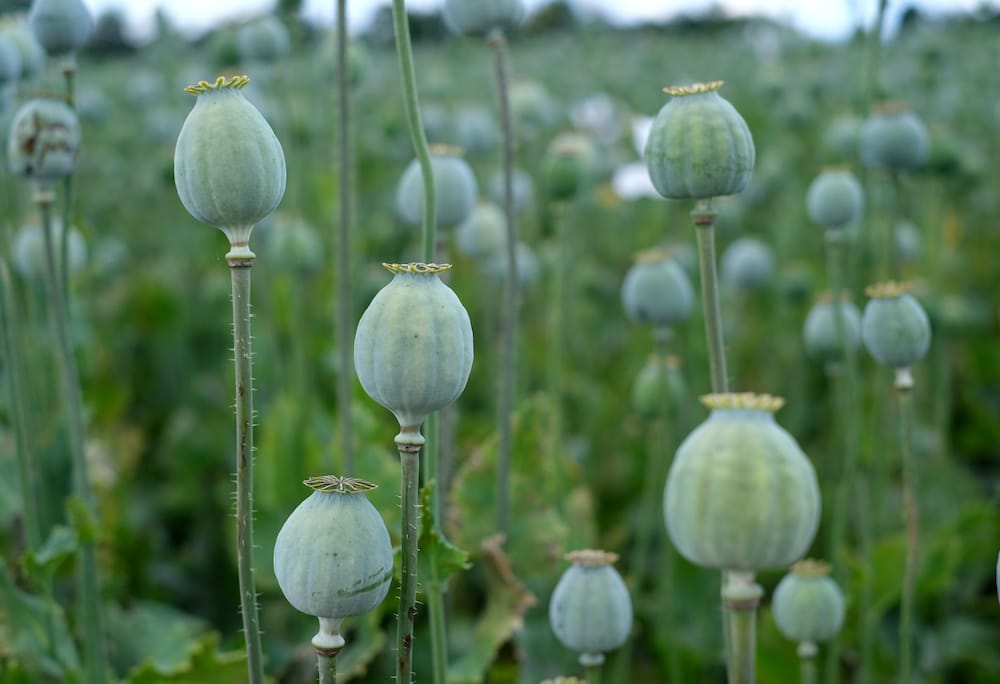
Taliban Could Affect Afghanistan’s Opium Production
Emily Murray ❘
The direct benefits the Taliban receives from Afghanistan's opium production raises concerns about the future of the Opioid crisis.
Read More ⟶

by Michael Muldoon | ❘
The unheard-of death rate within New Bilibid Prison (NBP) outside Manila developed as a confluence of recent political history, drug use, and culture in the Philippines. Like many other countries, illegal drug use has been popular and varied, and the most popular drugs in the Philippines are methamphetamines and marijuana. An anti-drug sentiment has grown since the 1970s, but recent years have seen a spike in the hostility with which drug offenders are treated. After his 2016 election, Rodrigo Duterte vowed to escalate the war on drugs in his country asking the public, “If you know of any addicts, go ahead, and kill them yourself…” in his inauguration speech.
The extremely hostile sentiment expressed by the president has encouraged police throughout the country to take lethal measures in the “management” of Philippine drug use. The rampant, and essentially state sanctioned violence has even begun to include public participation. Referred to as “riding in tandem” these civilians patrol on motorcycles in pairs and carry out drive by killings. The killers are almost always hired by the police, and targets are selected from lists of suspected, but unverified drug sellers or users. The definition of drug user specifies use within the last month, but reports describe many innocent lives lost in the seemingly indiscriminate raids and killings. People found in violation of the strict drug laws who haven’t been killed, are now flooding the country’s prisons.
Paid Advertising. We receive advertising fees from purchases through the BetterHelp links below.
Online Addiction Counseling
Get professional help from an online addiction and mental health counselor from BetterHelp.
Start receiving support via phone, video, or live-chat.
Between the early 2000s and 2019, the Philippines saw a drastic increase in prison population and incarceration rate. In 2005, jails held about 90,500 people, and by 2010 that increased by 5,000, up to 95,400. The next jumps are much more dramatic, escalating to 120,000 by 2014 and 188,300 by 2018. Before Duterte took office, there was a trend of increasing incarceration, but after he took office, the country saw its biggest leap in prison population yet. An increasing proportion of the incoming inmates are classified as pre-trial detainees.
These prisoners have yet to be convicted or acquitted of a crime and spend extremely long periods of time in prison regardless of outcome. The average amount of time spent pre-trial has risen to 528 days, which is one of the longest pre-trial averages in the world. In some extreme cases, people have spent 10 years in prison pre-trial only to be acquitted once they’ve finally gotten their time in court. The combination of exploding prison populations and unbelievably lengthy pre-trial periods have compounded to push the Philippines to the top of the world in prison overpopulation.
The Philippines has roughly 933 penal facilities, a range including small provincial jails through to national prisons. The variance in size and population distribution lead to a handful of the large national and city prisons bearing the brunt of rising incarceration rates. Pictures and videos from prisons like NBP display a dystopian lack of space or standards. Rooms designed to fit 30 inmates holding 130 instead, and 500 people trying to sleep on a single basketball court, shoulder to shoulder in sweltering heat. Some prisons are handling well over six times their capacity with no additional staff to compensate.
The Philippine prison system has been known for decades for its relative lack of standards or standard enforcement. Analyses of the Philippine legal system blame congested and stagnant courts incapable of handling their previous number of cases, let alone the flood of drug related charges since Duterte’s election. Similar critiques note a distinct shortage of judges and other legal professionals to ease the process.
The extreme prison conditions provide the perfect environment for disease and violence to thrive. Currently, pulmonary tuberculosis is spreading quickly throughout NBP. The bacterial infection can spread through inhalation of an infected person’s coughs, sneezes, or breath, and in a prison where inmates have less than three square feet to themselves, it’s unavoidable. Wealthier prisoners can buy themselves a private cell and bribe guards into smuggling amenities into the prison, but the vast majority of prisoners are too poor to receive similar treatment.
Treatment providers work with many insurances, including:




Check if my insurance covers rehab
Addiction Center is not affiliated with any insurance.
When space is such a limited resource, many gang disputes can escalate and erupt quickly. Arguments between rival gang members become physical fights, which can often spark riots. The Manila City Jail experienced a large riot recently, resulting in two deaths and over 30 injuries. This specific prison currently holds 6,300 inmates even though it’s designed to hold 1,000. The prison staff aren’t properly equipped or numerous enough to manage a skyrocketing prison population, which means that episodes of violence are as unstoppable as they are unavoidable. Layer these conditions on top of the rampant spread of tuberculosis, sepsis, and other diseases, and it becomes clear how so many people could have died within a single year. Duterte vows that the violence and aggressive prosecution will continue as long as he’s in office. His promise suggests Philippine prison standards will continue to plummet, while their death rates continue to rise.
Last Updated:
Author
Michael Muldoon

Michael Muldoon earned a B.A. in Media Studies from Penn State University, but instead of shifting into an academic career in social science, he has decided to put his skills to work in the pursuit of helping those struggling with addiction. He enjoys spending his free time at the climbing gym with friends.
Sources